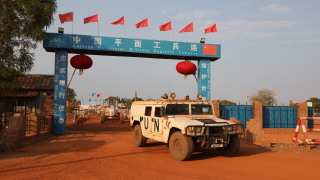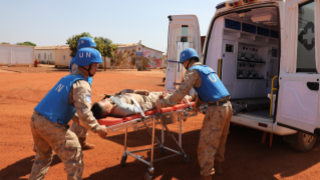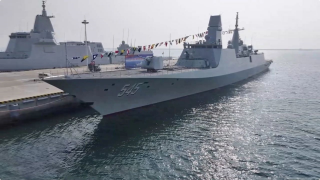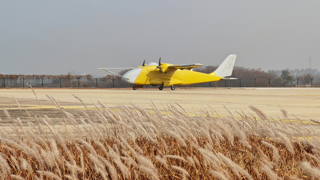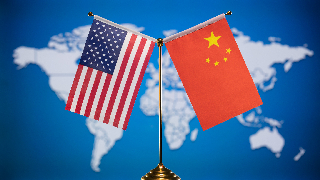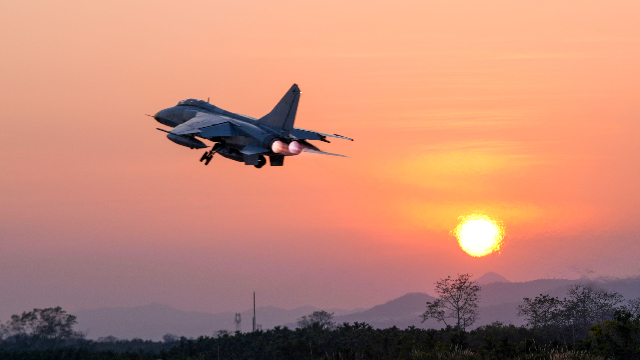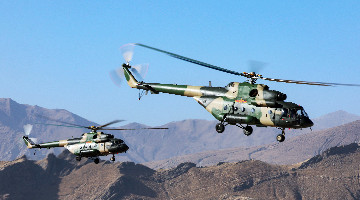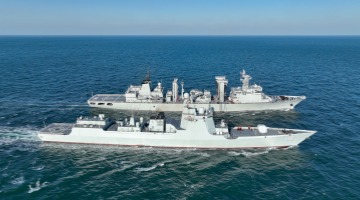By Lan Tian
Japan's Sankei Shimbun reported that the Yama Sakura joint military exercise conducted by the Japan Ground Self-Defense Force (JGSDF) and the armies of the US and Australia was launched at Camp Asaka of JGSDF on December 4. The Australian Army, which had previously participated as an observer, officially joined the exercise for the first time, attracting widespread attention.
The Yama Sakura joint command post exercise started in 1982 with a focus on practicing intelligence sharing and command control coordination procedures during joint operations. This exercise is the 82nd in the series. In this year's scenario, Japan is under attack, allowing for the verification of response measures taken by the JGSDF and the US and Australian militaries. About 200 Australian military personnel participated in the exercise and they were integrated into US forces, collaborating with the JGSDF Northern Army in defending Hokkaido. Around 6,800 personnel from Japan, the US, and Australia have participated in the exercise which will last until December 13. Additionally, the Philippines participated for the first time as an observer.
Regarding the significance of this exercise, Lt. Gen. Ryoji Takemoto, Commander of Western Army of the JGSDF, said at the opening ceremony held at the Asahi base, "We will demonstrate to the world the close relations between Japan, the US, and Australia and contribute to the stability of the free and open Indo-Pacific." Moreover, this exercise specifically emphasizes that, in the event of "Taiwan emergency" or "Okinawa emergency", Australia may provide ammunition and fuel support to the US military and the Japan Self-Defense Forces (JSDF).
In recent years, Australia has actively engaged in joint exercises with the US and Japan. On November 28, the Japan Air Self-Defense Force (JASDF), along with the US Air Force, invited the Royal Australian Air Force (RAAF) to conduct a smaller-scale Japan-US-Australia base security joint training at the Iruma Air Base in Japan. From February 8 to 24 of this year, the US Air Force, RAAF, and JASDF conducted the Cope North 23 aerial combat exercise in Guam and the Mariana Islands. Over 100 aircraft and more than 2,000 personnel participated, capable of large-scale aerial combat.
Furthermore, the Japanese government plans to further rotate the deployment of fighter jet units with Australia, aiming to utilize Australia's vast airspace for training. Regarding this, relevant personnel from the JASDF said, "Compared to training in Japan, going to Australia can enhance combat capabilities in a short period."
Australia's active participation in joint military exercises with the US and Japan reflects the increasingly strengthened military alliance between the three countries. The trilateral strategic dialogue between the US, Japan, and Australia was initiated in 2002 to coordinate security and defense policies among the three countries. With the introduction of the US Indo-Pacific Strategy, bilateral and trilateral security cooperation among the US, Japan, and Australia has been further enhanced. Particularly, as the US implements its strategic shift eastward, Japan and Australia are being drawn together as strategic anchors and Australia's role is becoming increasingly prominent.
In terms of the Japan-Australia military alliance, there are growing needs for increased cooperation between the two. From an external perspective, the efforts to build the Japan-Australia military alliance help the US conserve military resources. Therefore, in recent years, under US leadership and promotion, Japan and Australia have conducted various frequent training activities, including anti-submarine warfare, air defense, mine sweeping, and amphibious landing exercises. The number of joint exercises under the US-Japan-Australia trilateral strategic mechanism exceeded 20.
It can be said that Australia holds significant importance in the US strategic layout in the Asia-Pacific. In October 2022, the National Security Strategy (NSS) report released by the US mentioned the continuous strengthening of arrangements and deployments in the Indo-Pacific region, especially with Australia, India, and Japan. The US-Japan-Australia military alliance has become a crucial political foundation for the US to create an "Asian NATO," and Australia is hoped to exert substantial influence.
In this strategic context, Australia has been continuously strengthening defense cooperation with the US and Japan in recent years and the frequency of bilateral and trilateral military exercises has been substantially increased. Such an approach is likely to heighten tensions and worsen the overall security environment in the Asia-Pacific.
Editor's note: Originally published on zqb.cyol.com, this article is translated from Chinese into English and edited by the China Military Online. The information and opinions in this article do not necessarily reflect the views of eng.chinamil.com.cn.

